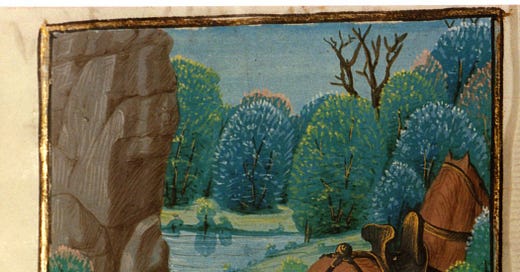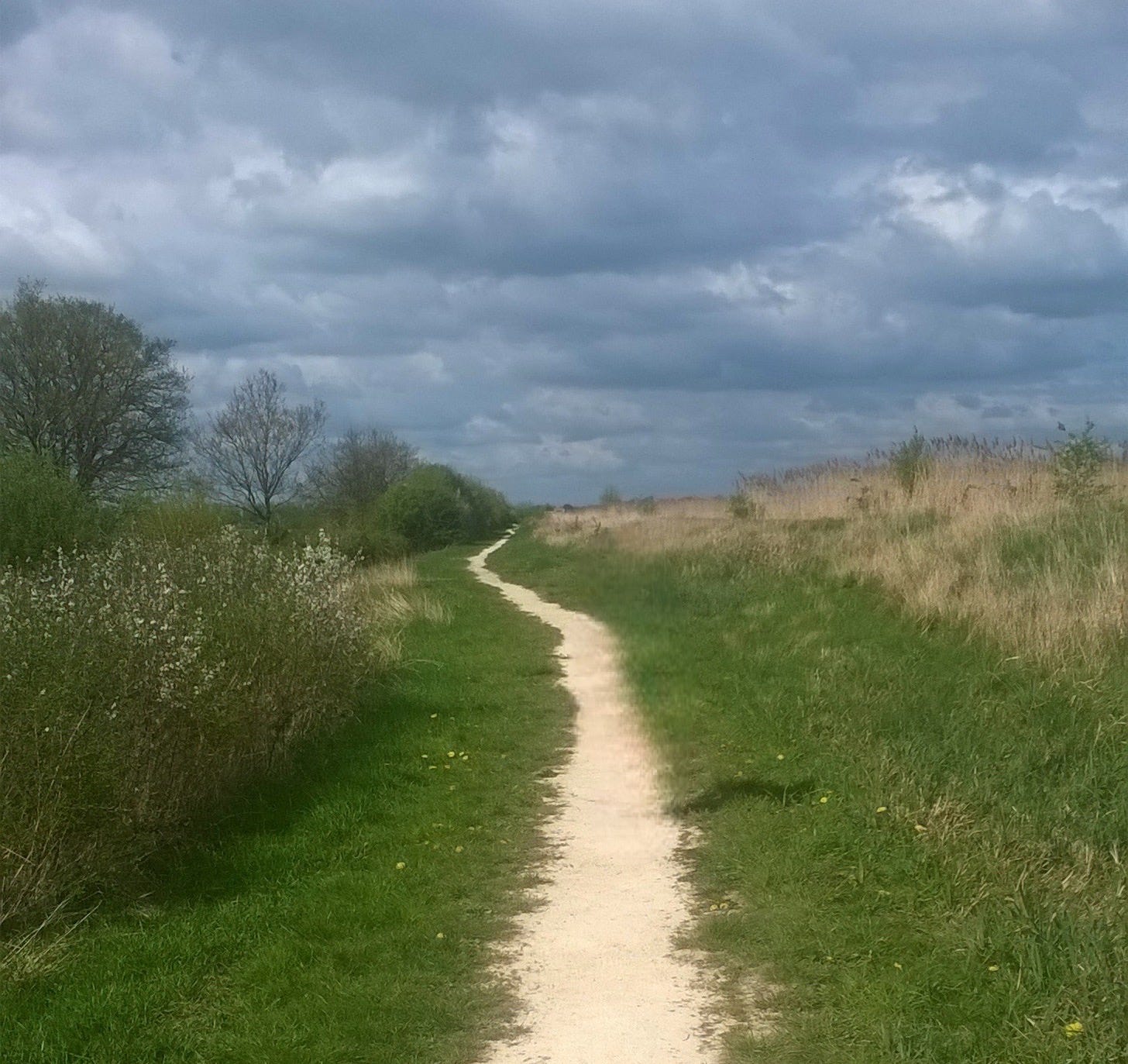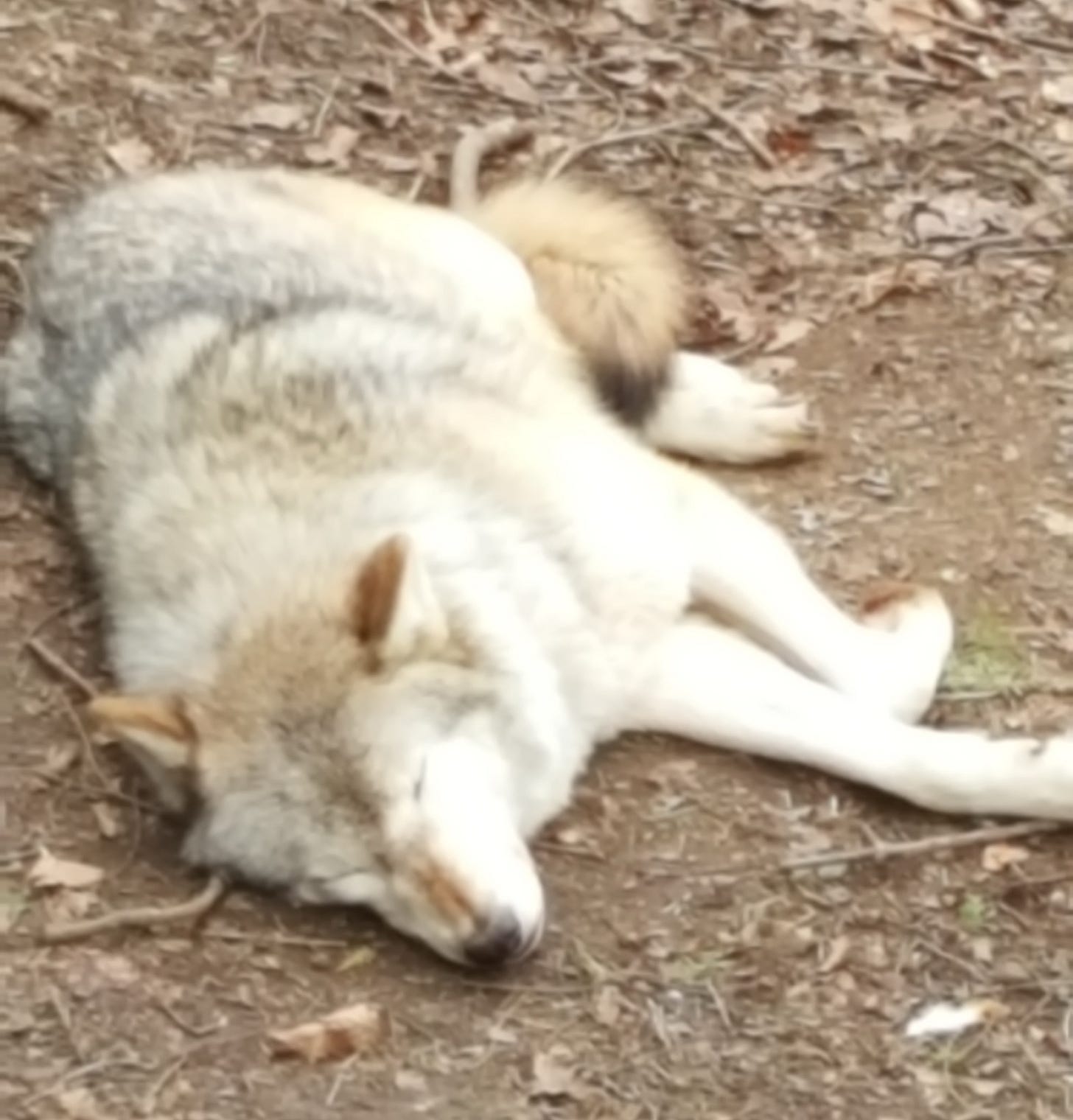The death of Mempricius - bad dog!
King Mempricius was an appalling monarch, sitting somewhere on the axis between Trump and Sauron. He reigned in Britain in the 10th century BCE, the great-grandson of his dynasty’s founder, Brutus the Trojan. Ironically, given his appallingness, Mempricius founded Oxford and its University after inviting Greek scholars, who had previously settled in Cricklade, to up-sticks to his pre-Dreaming Spires city.
Mempricius had killed his brother Malin to avoid sharing the kingship of Britain, and he continued the murderous theme throughout his reign, killing and terrorising in a manner that has since become a familiar template for tyrants. The country breathed a collective sigh of relief when Mempricius was waylaid and eaten by wolves during a hunting trip in North Oxford at a site since known as Wolvercote.
This was all recorded by historian Geoffrey of Monmouth, and it’s all fictional. Working in Oxford as a teacher-cleric, Geoffrey wanted to underline the outrageously early foundation of the university and dabble in some dodgy local etymology (Wolvercote has nothing to do with wolves - it means "Wulfgar's cottage”). He’s also making the point that history is a balance between goodies and baddies.
The relevance of all this is that, if nothing else, it points to England’s thriving mediaeval wolf population. When Geoffrey put pen to paper, Britain was home to hundreds of wolf packs (at a brave guess, between one wolf per 20 square kilometres in densely wooded areas, and one per 100 square kilometres in more human-dominated or less optimal habitats). Wolves had several perfect howling grounds in Oxfordshire, including the Wychwood, Woodstock, and Shotover royal forests. However, by the early sixteenth century, with over-enthusiastic hunting and a general push to eliminate large carnivores, all England’s wolves had disappeared. The beasts lingered in Scotland, with a last kill in 1680 and unverified stories of a straggler slain in 1743.
The Wolves Return
Post-extinction, wolves occasionally visited Oxford as part of the travelling menageries associated with St Giles’ Fair, held in September each year. The event in 1893 included a booth in which a man named Captain Rowland, armed only with a hot iron bar, was caged with wolves, a ‘Russian bear’ and two lionesses. This was the event’s biggest attraction, but not everyone enjoyed it: according to local reports, some audience members shouted to be let out but were unable to push through the crowd to the exit. As the reporter in Jackson’s Oxford Journal put it: “Whether they wished it or not, they were obliged to have their money’s worth”.
In 1931, 400 years after the last heirs of the Mempricius-killers had been slaughtered in Oxfordshire, wolves returned to grace the cages of the newly opened Oxford Zoo. It was a shoestring set-up, with cage security and animal welfare pretty poor.
On 26 January 1937, the zoo’s three wolves escaped. The cage door had been left open after feeding time, and the beasts bolted, clearing a way through the sparsely populated zoo precincts and exiting through the main gates into suburban Kidlington. Panic reigned, and police marksmen were called in to gun down the fugitives.
Otmoor, an escaped wolf’s playground
If the wolves made it into the woodlands of the surrounding countryside, they were in with a decent chance of evading the guns, at least for a few days. The terrain was not familiar to them, however, and one – a male measuring nearly two metres – loped down Banbury Road towards Oxford instead, causing uproar amongst the indigenous dog population. Inspector Barnett of the City Police shot the wolf dead as it neared the police houses that stood on Banbury Road, just a couple of hours after the escape.
The two survivors kept to the open countryside, but by now the entire county was on red alert. Robert Collett of Hampton Poyle spotted something big and bad huffing and puffing around his father’s farm, and bagged wolf number two on that same evening. But by nightfall, the third wolf had evaded capture.
From a reporter’s point of view, this was a very welcome outcome. It gave the local and national newspapers the opportunity to continue reporting the incident and to give readers a ‘To be continued…’ true-life-drama story that few can resist.
Grilled about the escape, Zoo Director Captain W. F. Cooper tried to reassure the public. The surviving wolf, he said, was a hand-reared female, just 14 months old and very timid. So confident was he that she would not stray too far from her home that he had left the zoo gates open, placing a tempting hunk of meat in a makeshift kennel close to the entrance, summoning the wolf to supper. She would, Cooper asserted, be very hungry after her ordeal, and was incapable of killing anything for herself. It was almost as if he were blaming the other two wolves for the breakout, the poor 14-month-old female a mere dupe in their criminal enterprise.
Two keepers stayed up all night waiting for the wolf’s return, but she failed to appear. In the small hours, a trigger-happy hunter gunned down something wolfish in a rickyard at nearby Thrupp, revealing afterwards that he had pursued the beast for two miles overground. Embarrassingly, the carcass turned out to be someone’s pet German Shepherd.
Tracks, meanwhile, were found at Islip, northeast of the city, after the wolf was spotted by the driver of a passing train. She was also glimpsed flitting ghostlike through car headlights in Islip. Four dead chickens were brought forth as evidence of her bloodthirstiness; but closer examination proved this to be the work of a fox. A local party of hunters then took up the scent and chased the wolf along the River Ray towards the wilderness of Otmoor: as suitable a haunt for a wolf as any in the south of England.
The huntsmen lost their prey in the gathering gloom; but on the following day, the wolf was seen once again in Islip on the fringes of Otmoor. This time she was clearly tired and terrified, running from farm to farm in an apparent bid to find the kind of shelter – i.e. man-made – to which she was accustomed.
Press photographer takes a shot
On the 28th, two days after the wolves had bolted, Johnny Johnson, a photographer from The Oxford Mail, teamed up with Captain Cooper’s son Dennis, packing sandwiches in preparation for a long day’s wolf hunting. Reports had suggested the animal was heading southwest. She had wondered too far from home to pick up the scent of the hunk of meat in the purpose-built kennel and had taken drastic action to secure some sustenance, killing not just one but 13 sheep on a farm near North Oxford Golf Club, all reportedly ‘bitten through the throat’. A leg from one of the flock was found a kilometre away from the field of carnage. No fox was going to take the blame for this little lot.
At which point, the sanguine Zoo Director probably realised that his beloved wolf was not going to have a happy ending. Inspector Barnett, killer of the Banbury Road beast, had seen her “hanging on to the throat of another sheep” (according to a report in The Times). He and the sheep’s owner had run at the wolf, and she had let them cover a hundred metres before bolting.
This time, the wolf, enlivened by a good feed, hurtled down into Oxford, probably searching for zoo and home. Instead, she met Johnson and Cooper, the former putting aside his camera and reaching for his gun as the wolf bounded into view in Summertown. Spotting her would-be assassins, she fled but had the misfortune to run into a gaggle of screaming children. Turning back in fear, she headed towards the A40 bypass.
According to his own report, intrepid Johnson commandeered a bike from a cyclist and kept up with the beast’s progress by following the sound of people shouting: “There’s the wolf, there’s the wolf!” From 30 yards, he took the best shot of his career, killing her with a single round.
Oxford Zoo had only managed to keep its doors open from 1931 to 1937, and the bad publicity generated by the wandering wolves was one of the causes of its demise. The zoos’ star turns had included Rosie the Elephant, Hanno the Lion, and a ‘winged cat’ captured locally in 1934 and said to use its dragon-like appendages to assist in jumping. After closure, the zoo stock was moved to a new establishment at Dudley – with the exception of Rosie, who went to Bristol. The zoo site is now the HQ of Thames Valley Police, who have successfully kept the wolf from the door since 1937.






